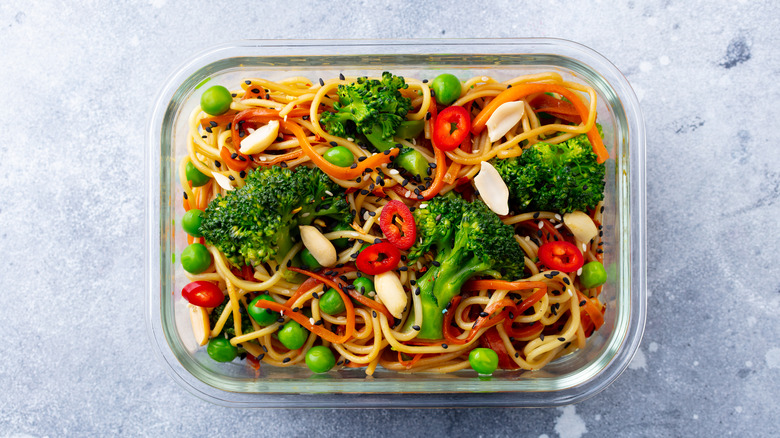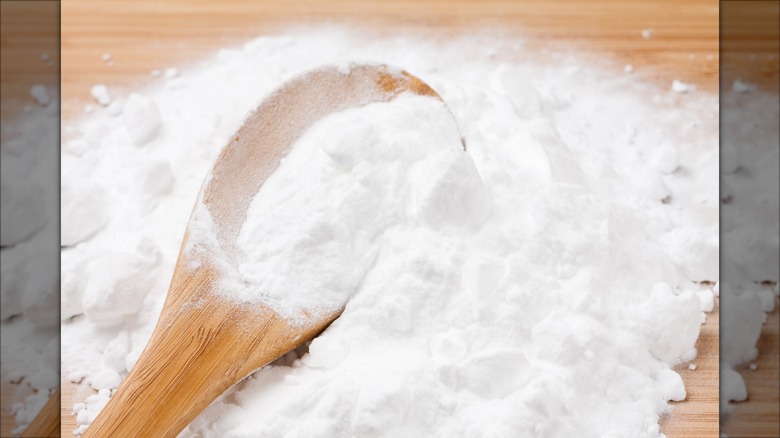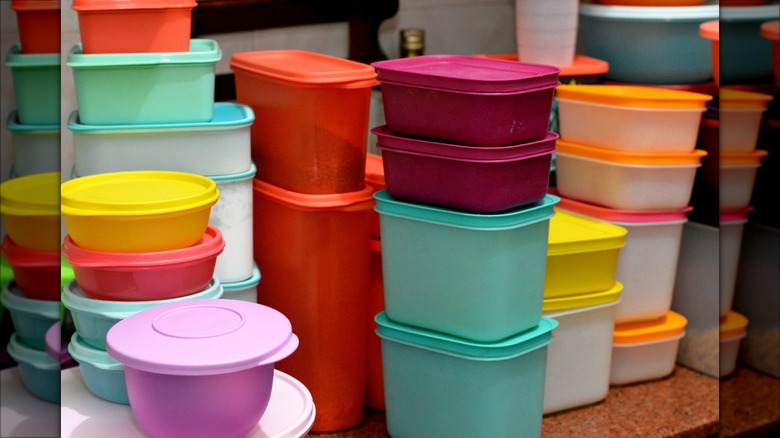The Easiest Way To Remove Food Stains From Plastic Storage Containers
Although the prospect of "leftovers for dinner" may be unexciting at times, the sight of full plastic food containers neatly stacked in your refrigerator can be a beacon of light when you're starving after a long day. But while using leftover containers can help you cut down on dishes since they can be used as both a storage solution and a bowl, there is a drawback when it's time to wash them. If you were using the storage containers to keep any tomato-based food like pasta, soup, or sauce, chances are the plastic will be left with an orange tint that won't go away no matter how hard you scrub.
There are two factors that contribute to these stains. The first, according to food scientist Dr. Emma Davies, is "a bright red pigment in tomatoes called lycopene." Writing for the BBC's Science Focus, Davies explains that both lycopene and the plastic of the food containers are hydrophobic. To avoid water (say from washing dishes), the lycopene presses and sticks against the molecules in the plastic container. Compounding the issue is the fact that tomato products are acidic, and if hot enough, can penetrate plastics. In other words, dumping hot food into a container or using it in the microwave can increase the probability of staining containers. Fortunately, there is a way to erase these stains using common household products.
Use baking soda to remove stains from food containers
In order to tackle tomato-tinted plastic, or any other greasy stain on your food containers, reach for baking soda. There are a few different ways you can use it depending on how much time you have. If you have time to let the food containers sit around, start by dusting a generous coating of baking soda all over the bottom and sides of the soiled container, then add enough warm water until the mixture takes on the consistency of runny toothpaste. Use the paste to cover every inch of the stain, and then let the mixture work its magic for at least 30 minutes. If the stain hasn't budged, give it another half an hour before rinsing the paste away, and proceed to wash the container as normal.
If you have less time, you can speed up the process by adding a squirt of dish soap to the baking soda and water paste. Again, use a small brush or a gloved finger to scrub the solution all over the stained area, then leave it alone. The addition of the dish soap should eliminate the stain in less time, but it will still take about 15 minutes.
More ways to combat stains
Using baking soda is one of the most effective ways to clean stains off of plastic food containers, but there are a few other options if you don't have any on hand. Vinegar can be a handy tool in fighting fresh stains; just fill the container with hot water, add a hearty splash of vinegar, and let the solution sit overnight before washing the container. If you're dealing with stains that have been around for a while, bleach can be used as a last resort. Cover the stain with water, add a tablespoon or two of bleach, and let it sit at least for a few hours before thoroughly washing the container to remove any chemicals.
If you want to avoid chemicals and live somewhere with lots of warm, direct sunlight, you can set the plastic containers in the sun. This can lighten stains and remove odors after a few hours. The best way to get rid of stains is to prevent them in the first place. Consider using glass food containers to store tomato-based or especially greasy dishes for a much easier clean-up. Otherwise, stick to baking soda to remove stains without too much hassle.


